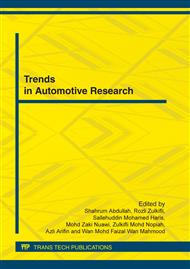p.125
p.130
p.135
p.140
p.145
p.150
p.155
p.160
p.165
Experimental Study of an Internal Heat Exchanger Influence on R134a Automobile Air Conditioning System
Abstract:
Liquid-suction or internal heat exchanger (IHX) is installed in vapor compression refrigeration systems to exchange energy between cool low-pressure gas and warm high-pressure liquid refrigerant. The aim of this research is to experimentally evaluate the effect of IHX adaptation in an automotive air conditioning system focusing on evaporator working conditions. In this new design of IHX, the high-pressure liquid passes through the central channel and the low-pressure vapor flows in several parallel channels in the opposite direction. The experimental set-up has been made up of original components of the air conditioning system of a medium sedan car, specially designed and built to analyze vehicle A/C equipments under real work conditions. The results show that low pressure drop will be imposed on the cycle using this type of IHX. Also, they confirm considerable decrease of compressor power consumption; it is intensified at higher evaporator air flow. A significant improvement of the coefficient of performance will be achieved with IHX too. The influence of operating conditions has been also discussed in this paper.
Info:
Periodical:
Pages:
145-149
Citation:
Online since:
April 2012
Price:
Сopyright:
© 2012 Trans Tech Publications Ltd. All Rights Reserved
Share:
Citation:


